If you keep reptiles, you know that choosing their home is key. It’s not enough to throw your gecko, bearded dragon, or snake into a glass box.
Their enclosure affects their health and happiness. For good airflow, nothing beats a ventilated screen-top terrarium.
I’ve used many terrariums, and trust me, not all screen tops are the same. Some look nice in the store, but at home, they can feel like a sauna with no airflow.
Ever faced that issue? I have too. That’s why we’re exploring the best ventilated screen-top terrariums today.
So grab your favorite drink, get cozy, and let’s talk about the homes your scaly friends deserve.
Why Ventilation Matters for Reptiles
Before we geek out on terrarium picks, let’s cover the basics. Why do we care so much about ventilation?
Reptiles need airflow. Without it, humidity skyrockets, mold creeps in, and your pet sits there breathing stale air. That’s not only gross but dangerous. Think respiratory infections, skin problems, and overall stress.
And here’s the kicker: many beginner reptile keepers underestimate this. They focus on size, glass clarity, or fancy locks, but forget that air circulation literally keeps their reptile alive.
Ever wondered why some reptiles thrive in one setup but barely eat in another? Yup, ventilation plays a huge role.
What Makes a Screen-Top Terrarium Great?
Not every terrarium with a mesh top deserves a gold star. In fact, some are cheap knockoffs that barely keep your pet safe. Let’s break down the must-haves:
- Sturdy mesh top: Thin wire bends too easily and lets feeders escape. A sturdy top keeps everything in and the airflow consistent.
- Locking mechanism: A sliding lock or secure clips are a lifesaver, especially if you keep snakes. They’re escape artists.
- Easy lighting setup: You’ll probably use UVB and heat lamps, so the top needs to handle fixtures without sagging.
- Balanced airflow: A great terrarium doesn’t dry out desert reptiles too much or trap moisture for tropical ones.
I’ve learned the hard way that cheap lids buckle under heat lamps. Nothing ruins your day faster than a crumpled mesh cover that drops your basking lamp inside the tank. Trust me, you don’t want that mess.
Top Picks: Best Ventilated Screen-Top Terrariums
1. Exo Terra Glass Terrarium
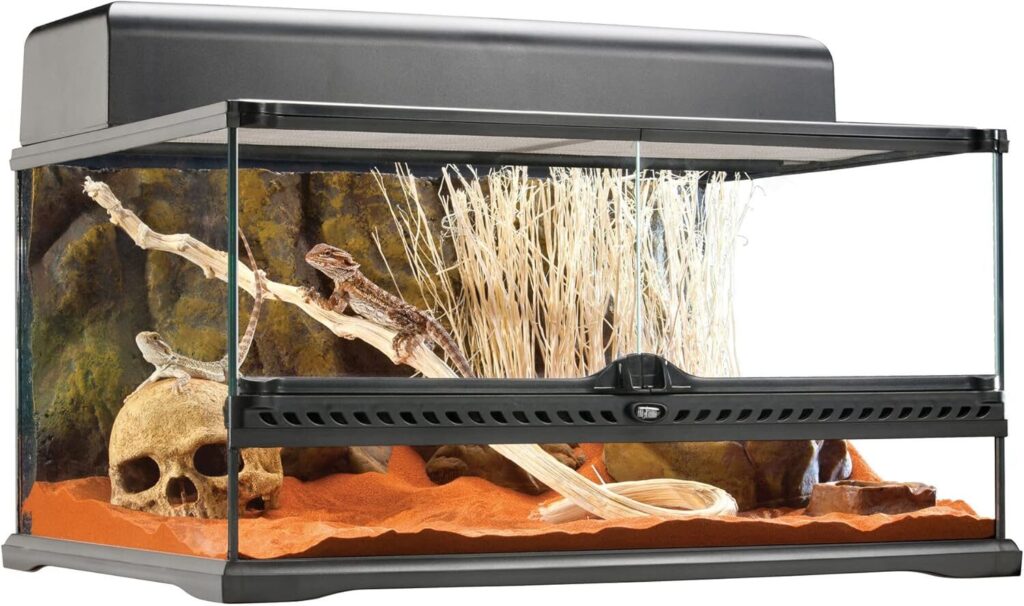
This one’s a classic for a reason. The Exo Terra terrariums are practically the standard in reptile keeping.
Why I like it:
- The front-opening doors make feeding and cleaning painless.
- The screen top is strong and allows heat and UVB light to pass through like a champ.
- Built-in ventilation strip at the front helps regulate airflow even better.
I used one of these for my leopard gecko, and the difference in air quality was night and day compared to my old tank. Plus, the locks feel secure, which means no surprise escape attempts.
2. Zilla Critter Cage with Screen Top
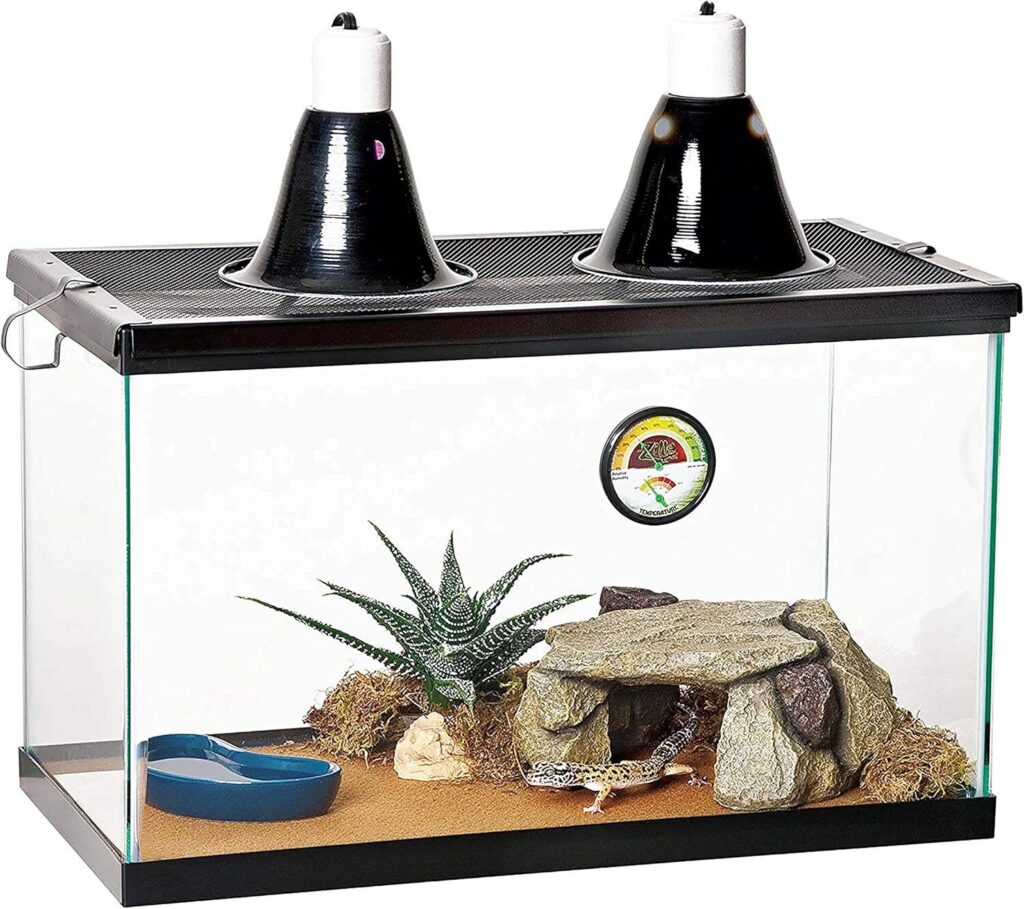
This one is budget-friendly but doesn’t skimp on quality.
Highlights:
- The escape-proof mesh top locks tight, so you don’t wake up to find your lizard crawling on your pillow.
- It’s lightweight but solid enough for most small to medium reptiles.
- Great for people just starting out who don’t want to spend a fortune.
IMO, Zilla nailed the balance of affordability and function. If you’re new and don’t want to overthink it, this one’s a safe bet.
3. Repti Zoo Glass Terrarium

If you want something that looks sleek in your living room, Repti Zoo brings style to the game.
Perks:
- Front and top ventilation keeps things balanced.
- Thicker glass makes it feel sturdy and long-lasting.
- Comes in several sizes, so you can actually pick one that matches your reptile’s growth.
I had a friend who used this for their chameleon, and honestly, I was jealous. It looked like a mini jungle setup you’d see at a zoo.
4. Carolina Custom Cages Terrarium
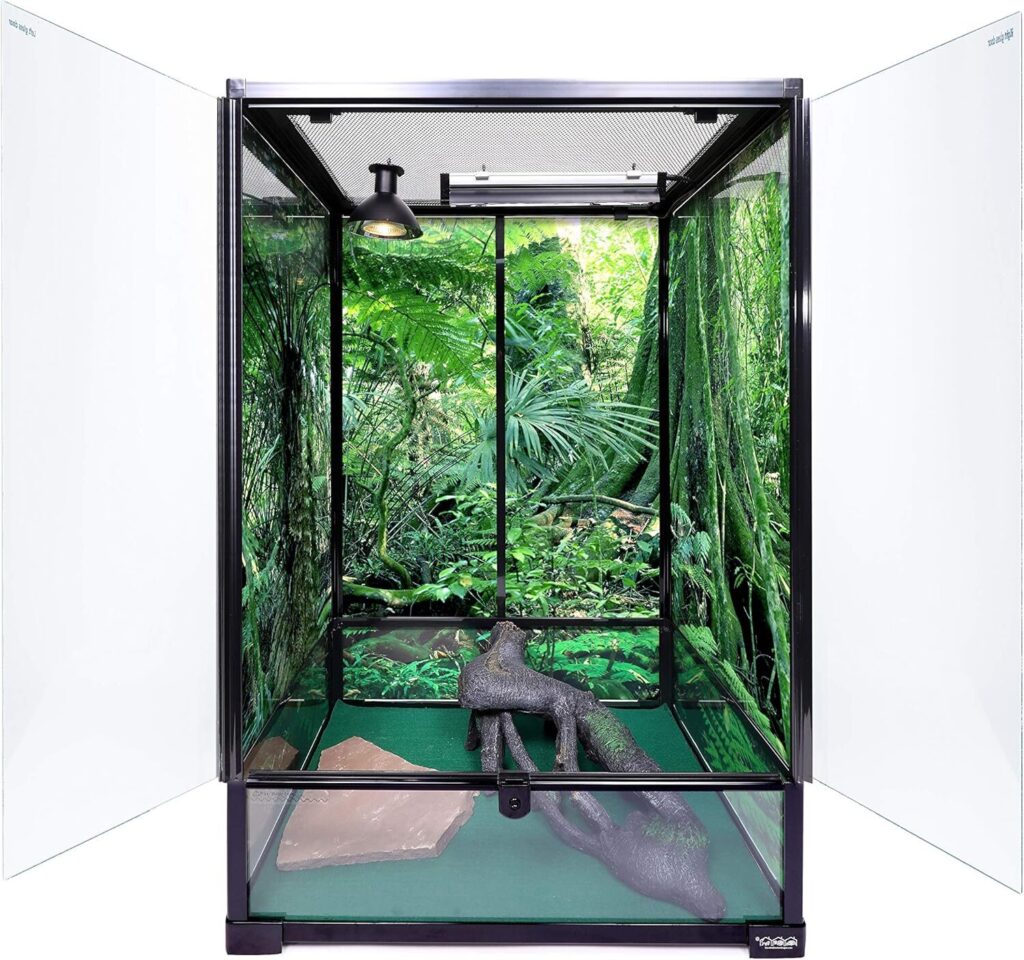
These guys make tanks that feel premium right out of the box.
What stands out:
- The screen top is reinforced, so it handles heavy lighting rigs easily.
- The front ventilation panel keeps airflow steady.
- The glass clarity is excellent, which makes watching your reptile even more fun.
The only downside? They’re on the pricier side. But if you want something that lasts years, this is an investment piece.
5. DIY Options with Mesh Tops
Not everyone wants to buy pre-built setups. Some folks go the DIY route. If that’s you, just remember: the screen material matters. Use hardware cloth or strong aluminum mesh. Skip flimsy window screen material, because crickets will chew through it, and snakes might push out.
If you’re handy, DIY builds let you customize airflow exactly how you want it. Ever tried designing your own? It’s a pain at first, but nothing beats the pride of saying, “Yep, I built that enclosure myself.”
Common Ventilation Mistakes to Avoid
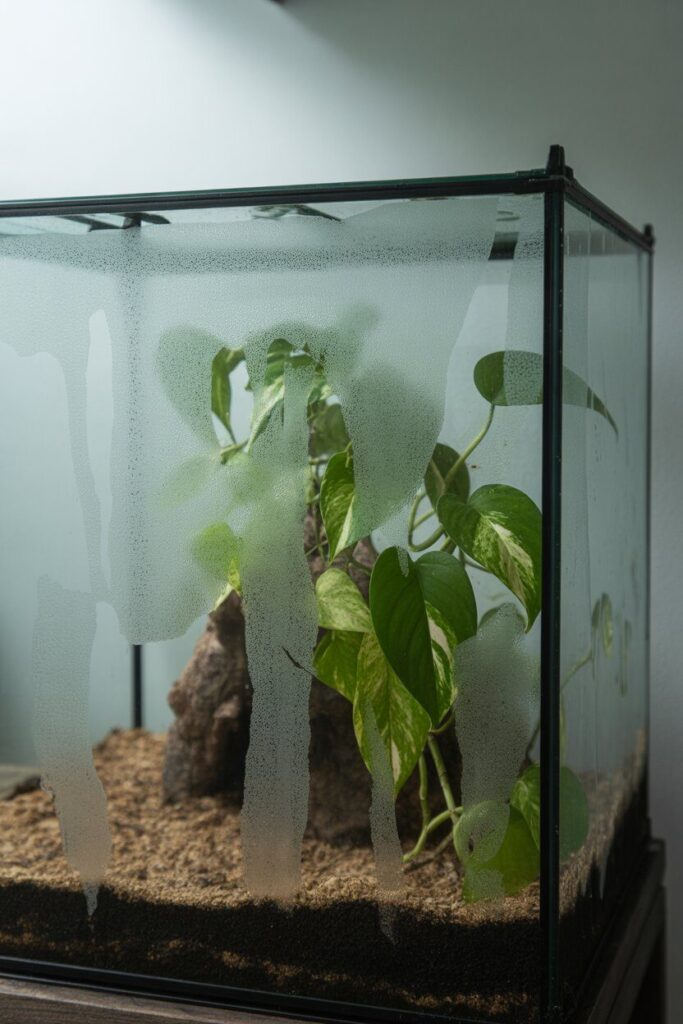
Using Solid Lids
Some beginners grab a solid plastic or glass lid thinking it keeps humidity stable. While true, it also traps heat and kills airflow. Unless you’re keeping dart frogs in a bioactive setup, stick to mesh.
Poor Placement of Lights
If your basking lamp sits on a weak mesh top, it may sag or warp. That messes with both safety and ventilation. Always double-check that the mesh can support your lighting.
Ignoring Humidity Needs
Ventilation isn’t just about air. It’s about balance. A desert reptile like a bearded dragon needs airflow to stay dry, but a tropical reptile like a crested gecko needs moisture without mold. Too much or too little airflow wrecks their habitat.
Tips for Maximizing Ventilation in Screen-Top Terrariums
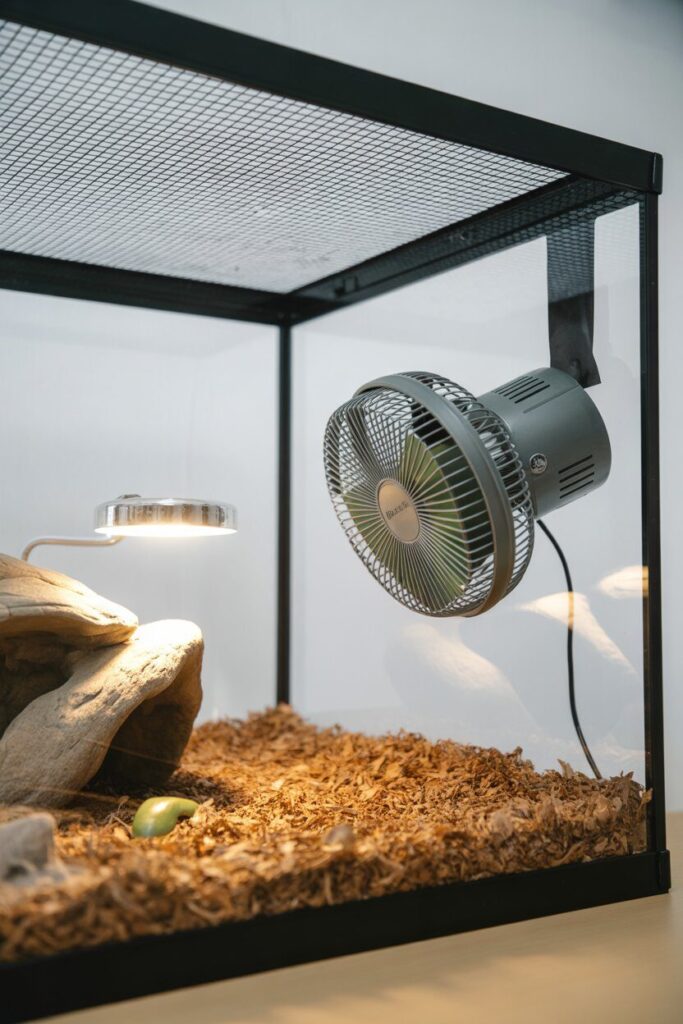
- Use fans smartly: A small USB fan near the terrarium can boost circulation without blasting your reptile.
- Position enclosures wisely: Don’t shove them into tight corners with no airflow. Your reptile will suffocate in stale air.
- Keep mesh clean: Dust and calcium buildup block airflow. Wipe it down regularly.
- Experiment with humidity trays: A shallow water dish or substrate misting helps balance airflow with moisture.
These small tweaks make a big difference. Ever noticed how fresh your tank smells when airflow is just right? Yeah, your reptile notices too.
Which Screen-Top Terrarium is Best for You?
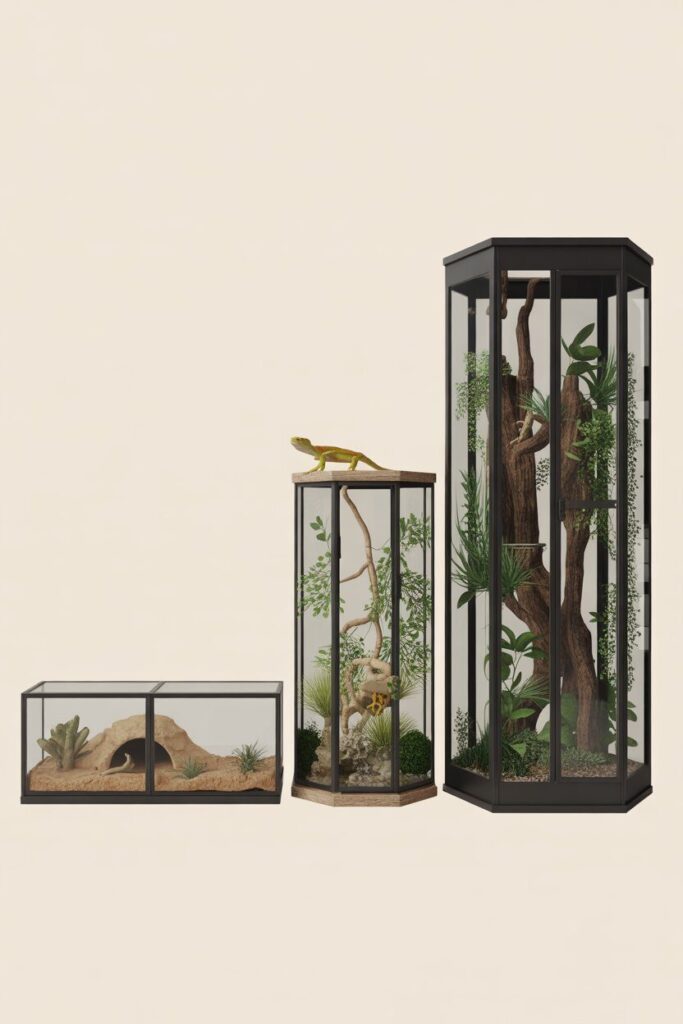
This really depends on your reptile. Let’s match a few species with their best picks:
- Bearded dragons: Go with the Exo Terra or Carolina Custom Cages. Both handle desert setups beautifully.
- Crested geckos: The Repti Zoo gives you vertical space and balanced airflow.
- Ball pythons: The Zilla Critter Cage works fine if you tweak humidity with substrate and misting.
- DIY folks: Build your own, but use quality mesh and strong frames.
At the end of the day, the best ventilated terrarium is the one that matches both your reptile’s environment and your lifestyle.
Final Thoughts
Keeping reptiles isn’t just a hobby. It’s a responsibility. Their entire health depends on the environment you build. And honestly, choosing a well-ventilated screen-top terrarium is one of the smartest choices you’ll ever make for your scaly friend.
Think about it. Would you want to live in a sealed room with no fresh air? Of course not. Neither does your gecko or snake. A great terrarium keeps them breathing easy, looking vibrant, and living longer.
So whether you go for the budget-friendly Zilla, the stylish Repti Zoo, or splurge on Carolina Custom Cages, you’ll thank yourself later. Trust me, your reptile will too.
Now it’s your turn. Which setup are you eyeing for your pet?
Why Is Ventilation Important in a Reptile Terrarium?
Ventilation controls air quality and humidity in your reptile’s enclosure. Without good airflow, moisture builds up, leading to mold and bacteria.
This can cause respiratory infections, skin problems, or stress for your reptile.
Good airflow also helps manage temperature. Warm air rises and needs a way to escape. A ventilated screen top allows this natural exchange.
Think of it as your reptile’s indoor climate system. When balanced, it keeps them comfortable and healthy.
Do All Reptiles Need a Screen-Top Terrarium?
Not all reptiles need a fully screened terrarium, but most do benefit from some ventilation. Desert species, like bearded dragons and uromastyx, thrive with good airflow because they come from drier climates.
Tropical reptiles, like crested geckos, also need airflow. However, they require humidity retention, so a terrarium with glass panels and a mesh top works well.
Finding the right balance is key. For instance, a ball python needs more humidity, so too much ventilation can be harmful.
In contrast, a leopard gecko thrives on fresh air and low moisture. Always match the enclosure to your reptile’s natural habitat for the best results.
How Do I Increase Ventilation Without Losing Humidity?
Reptile keepers often face humidity challenges. One easy fix is to mist the enclosure regularly. Keep the screen top on for airflow.
You can also add live plants or use moisture-retaining substrates like coconut fiber or sphagnum moss. These help maintain humidity while allowing fresh air to circulate.
Another tip is to cover part of the screen top with plastic or acrylic sheets. This reduces evaporation but still allows airflow.
The goal is to find the right balance. You want humidity to stay in the ideal range while ensuring your reptile gets enough oxygen.
Can a Screen Top Handle Heat and UVB Lamps Safely?
Most high-quality screen-top terrariums support heat and UVB fixtures. Always check the mesh’s sturdiness.
A strong, reinforced top can hold clamp lamps or dome fixtures without bending. Cheaper, thin mesh lids may warp from constant heat, creating a safety hazard.
To prevent accidents, use fixtures designed for terrariums. Also, monitor how the mesh handles weight and heat.
If you see sagging or discoloration, upgrade the top. It’s better to invest in a strong lid than to risk a fire or an overheated reptile.
What Size Terrarium Should I Choose for Proper Ventilation?
The size of the terrarium affects airflow significantly. Larger enclosures allow better circulation, while smaller tanks can trap humidity and heat.
A good rule is to provide as much space as possible for your reptile’s species. Bigger isn’t always better for young reptiles, but small enclosures often lead to ventilation problems and stress.
If you’re unsure, check care guides for your specific reptile. For example, a juvenile leopard gecko can start in a 20-gallon long tank with a ventilated top.
In contrast, an adult bearded dragon needs a much larger enclosure for proper airflow and comfort. Always choose a terrarium size that meets current needs and allows for future growth.
